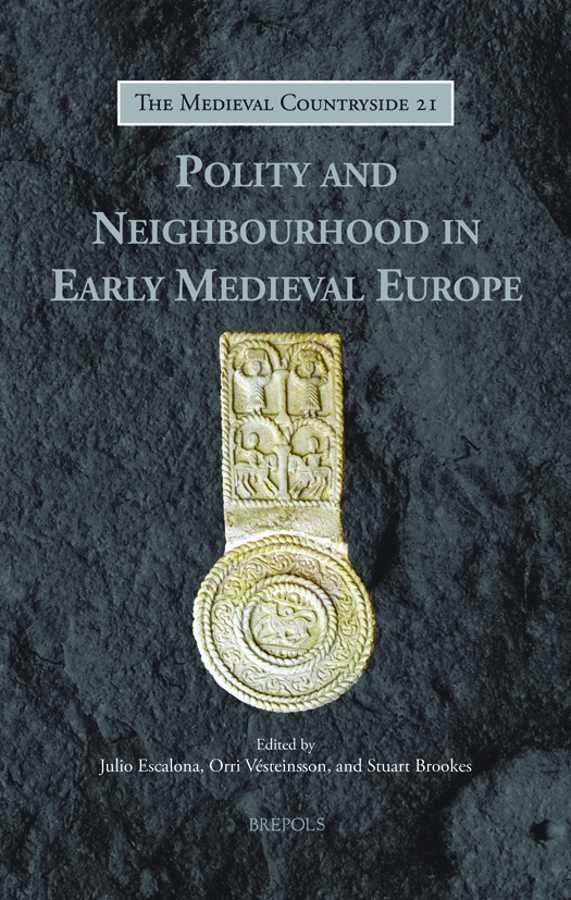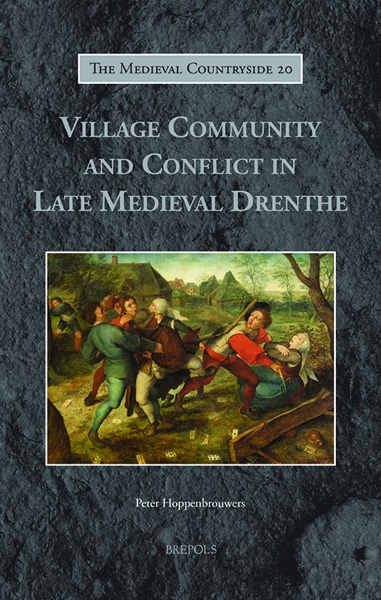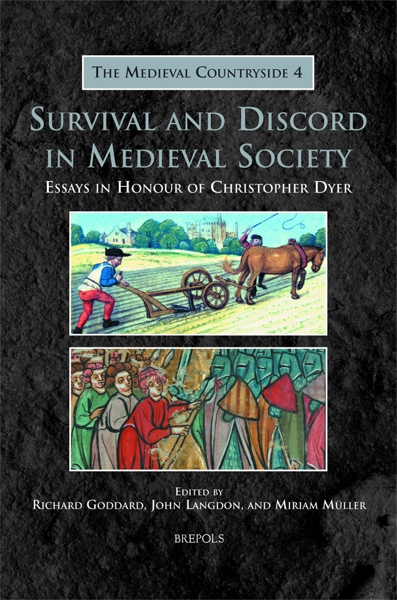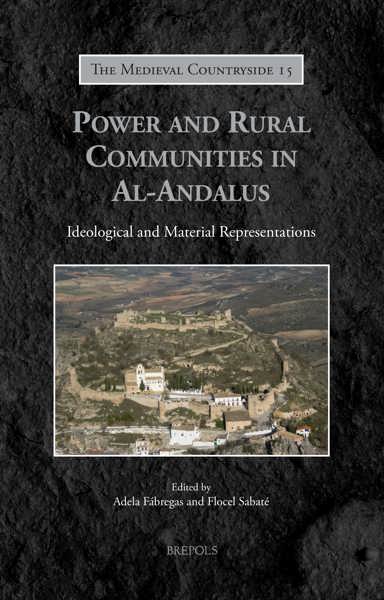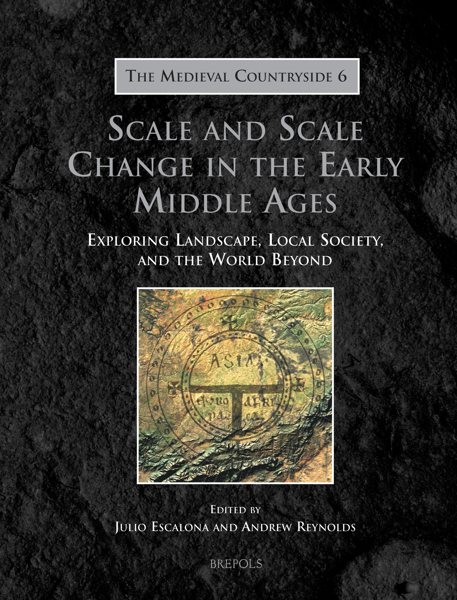
Polity and Neighbourhood in Early Medieval Europe
Julio Escalona Monge, Orri Vésteinsson, Stuart Brookes (eds)
- Pages: xviii + 430 p.
- Size:156 x 234 mm
- Illustrations:14 b/w, 39 maps, 6 graphs
- Language(s):English
- Publication Year:2019
- € 120,00 EXCL. VAT RETAIL PRICE
- ISBN: 978-2-503-58168-2
- Hardback
- Available
- € 120,00 EXCL. VAT RETAIL PRICE
- ISBN: 978-2-503-58169-9
- E-book
- Available
Archaeologists and historians working in southern and northern Europe, explore diverse evidence — from landscape and burial archaeology to charters and chronicles — to discuss the relationships that constituted neighbourhoods and roles these played in the processes of state formation that can be observed in the peripheries of the Frankish world.
***
“Its scope and ambition are matched by the quality and diligence of the papers, and it must be regarded as an important contribution to the growing literature on governance, community and political practice in early medieval Europe.” (Patrick Gleeson, in Medieval Archaeology, 64/2, 2020, p. 405)
« Insgesamt handelt es sich um eine Zusammenstellung lesenswerter Aufsätze, die die Debatte um die Stellung lokaler, insbesondere bäuerlicher Akteure, um eine neue Facette bereichert.» (Till Stüber, dans Francia-Recensio, 4, 2020)
“The most significant outcome of the work is the light it sheds on the changing groupings and hierarchy of particular areas. Shifting boundaries and settlements that grow or disappear are shown to be part of the history in which neighbourhoods grow and amalgamate with others to form major polities.” (Sybil Jack, in Parergon, 38/1, 2021, p. 214)
“As a result, it offers a vital window into the world of medieval European agrarian societies, both local and supralocal.” (Stuart Pracy, in Agricultural History Review, 70/1, 2022, p. 149)
“(…) ist dieser Band ein wichtiger Beitrag zur Erfoschung des Lokalen und des Handelns seiner Bewohner im Verhaltnis zu den politischen Akteuren von auserhalb wahrend des fruhen Mittelalters. Er zeigt die Starke eines verleichenden historischen Ansatzes, wenn er in den richtigen Kontext gestellt wird. Dazu tragen sichrlich auch die zehlreichen Karten, Diagramme und Tabellen bei.” (Bastiaan Waagmeester, in Rottenburger Jahrbuch für Kirchengeschichte. 40, 2021, p. 256
How were early medieval people connected to each other and to the wider world? In this collection, archaeologists and historians working in very different areas of early medieval Europe explore diverse evidence — from landscape and burial archaeology to charters and chronicles — to discuss the relationships that constituted neighbourhoods and the roles these played in the processes of state formation that can be observed in the peripheries of the Frankish world. What these case-studies teach us, the contributors argue, is that polities are formed not through the exclusive operation of either top-down or bottom-up agencies, but from the interplay between them. By exploring the ways in which local knowledge, social ties, and understandings of landscape interacted with higher-level authorities and institutions, we can gain real insights into the nature of early medieval power and people’s experiences of it.
Marking the culmination of a collective effort that has spanned over a decade and three funded projects, this volume brings together case-studies from Spain, Italy, England, northern Frankia, Norway, and Iceland to offer a comparative view of polities and neighbourhoods in early medieval Europe. Drawing on new research, and offering new perspectives driven by an interdisciplinary approach, this volume is of relevance to a range of disciplines including archaeology, history, onomastics, geography, and anthropology.
Introduction — JULIO ESCALONA, ORRI VÉSTEINSSON, AND STUART BROOKES
Polities, Neighbourhoods, and Things In-Between — JULIO ESCALONA, ORRI VÉSTEINSSON, AND STUART BROOKES
Understanding the Identities and Workings of Local Societies in Early Medieval England, AD 800-1100 — GRENVILLE ASTILL
Peasant Communities and Landscape Change in Northwest Iberia — MARGARITA FERNÁNDEZ MIER
Early Medieval Burials and Settlements: Some Reflections on Northern Italian Archaeological Evidence — ALEXANDRA CHAVARRÍA
Ancestors and Landscape: Early Medieval Burial Sites in the Central-Western Regions of the Iberian Peninsula — IÑAKI MARTÍN VISO
The Thing and the King: The Formation of the Norwegian Medieval Kingdom — FRODE IVERSEN
Meeting Places, Markets, and Churches in the Countryside between Madrid and Toledo, Central Spain, c. AD 500–900 — ALFONSO VIGIL-ESCALERA
State Formation and World View: Commonwealth Iceland as a Part of the Norwegian Realm — ORRI VÉSTEINSSON
‘Est haec effera gens’: Landscapes of Negotiation on the Former Island of Walcheren, the Netherlands — LETTY TEN HARKEL
Territoriality and Social Stratification: The Relationship between Neighbourhood and Polity in Anglo-Saxon England — STUART BROOKES AND ANDREW REYNOLDS
Regions and Micro-Regions of Scribal Practice — WENDY DAVIES
The Use of the Term Villa in Early Medieval León: A Review of the Economic Base of the Astur-Leonese Monarchy, Ninth-Eleventh Centuries — ÁLVARO CARVAJAL CASTRO
Dense Local Knowledge: Grounding Local to Supra-local Relationships in Tenth-Century Castile — JULIO ESCALONA
Local Places and Local People in Anglo-Saxon Wessex — ALEX LANGLANDS
Conclusion — JULIO ESCALONA, ORRI VÉSTEINSSON, AND STUART BROOKES
Index

